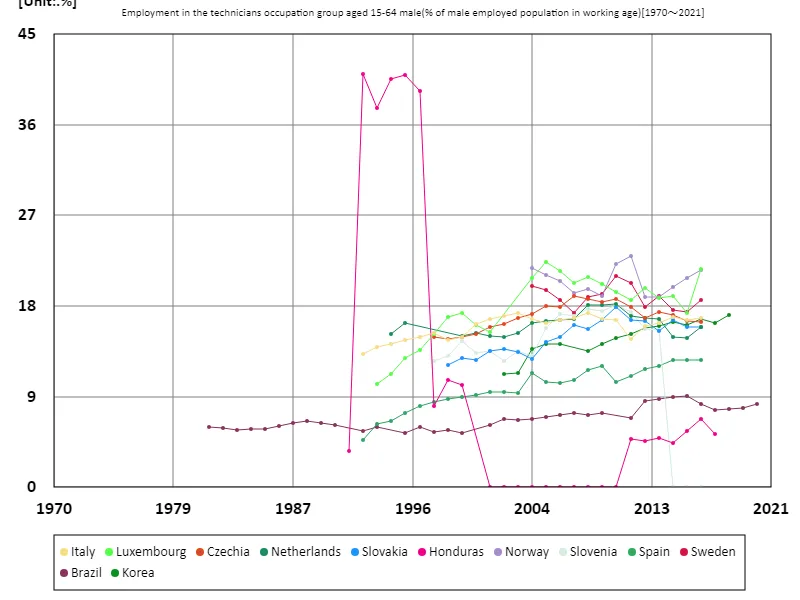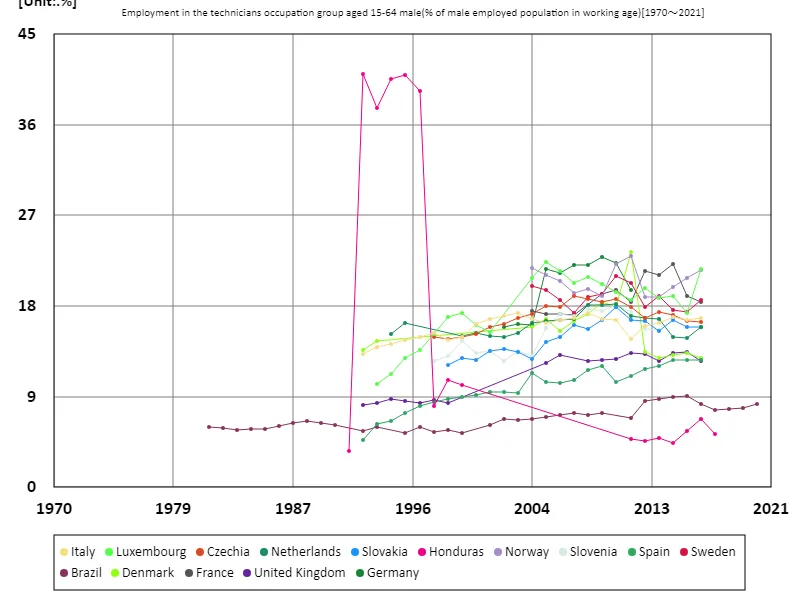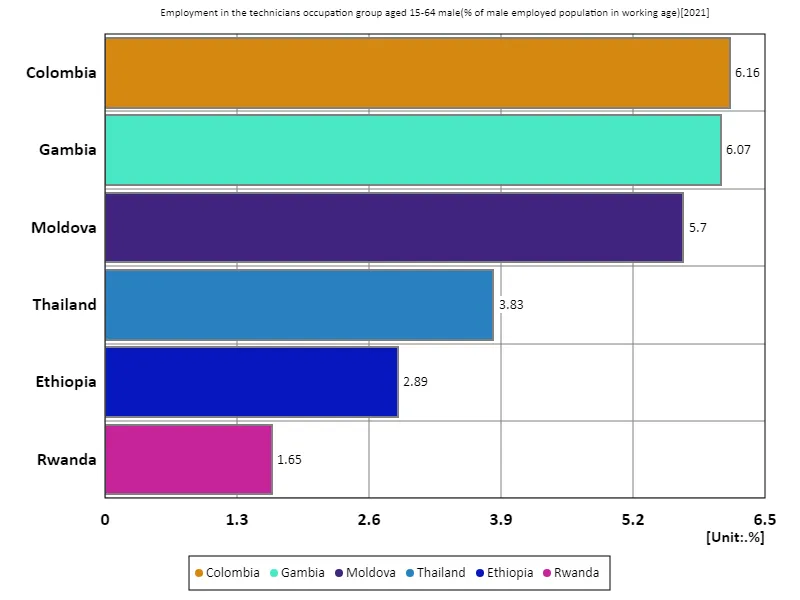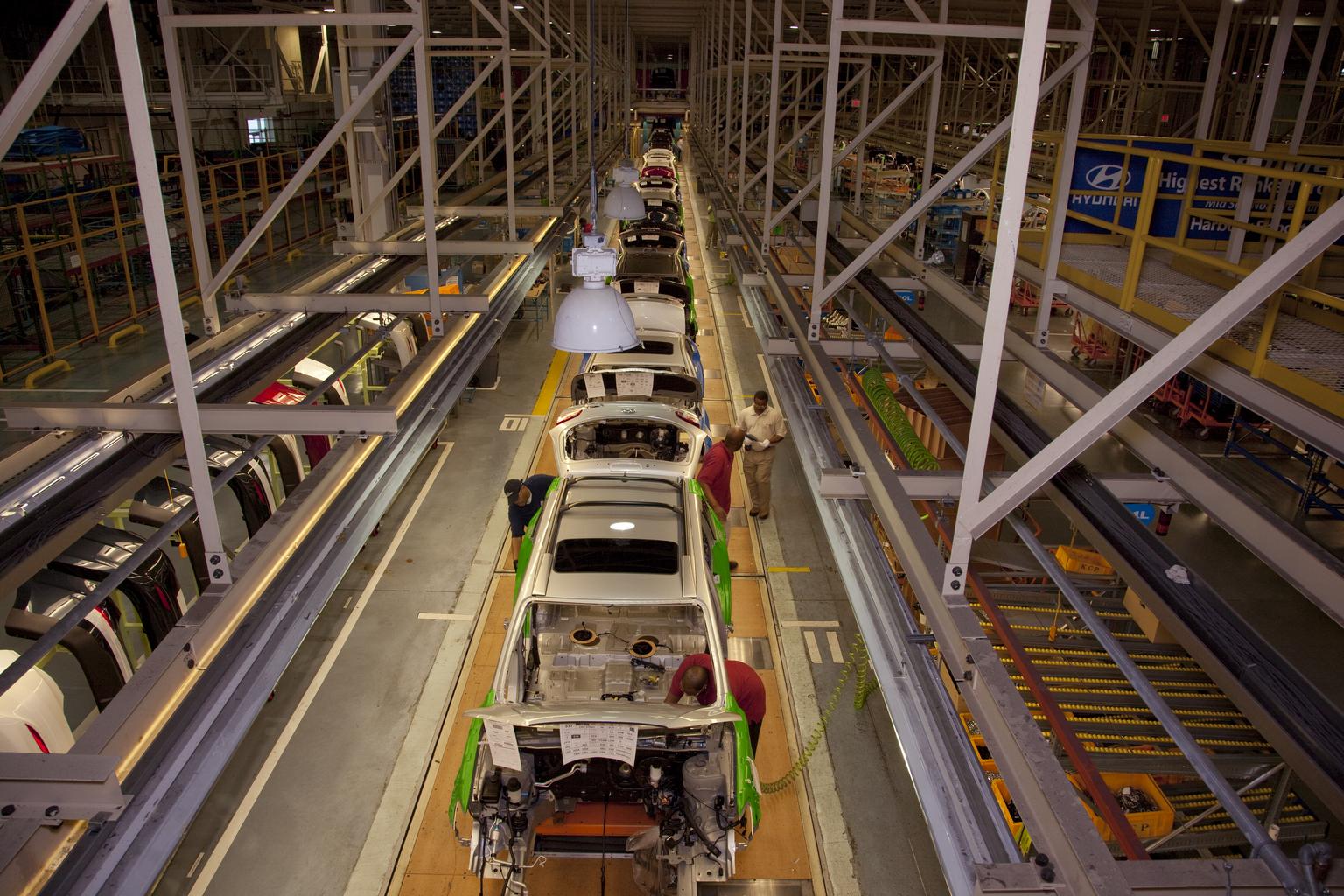- Abstract
- Employment rate for men aged 15-64 in the technical occupations (percentage of working-age males in the workforce)
- Employment rate of men aged 15-64 in the skilled occupations sector (percentage of working-age male employed population) (Worldwide)
- Employment rate of men aged 15-64 in skilled occupations (percentage of working-age male employed population) (Worldwide, latest year)
- Reference
Abstract
In terms of employment rates, data for the skilled occupational sector reflects different economic backgrounds, education systems and labour market conditions across countries. Brazil’s high employment rate in the technical sector in 2020, at 8.23%, suggests that the country employs a relatively large number of men in technical jobs. This may be due to Brazil’s investment in industrial development and technical education. On the other hand, other countries may have lower employment rates in skilled occupations, which may reflect differences in the availability of education, industrial needs, and the level of technological innovation. Overall, employment rates in the skilled sector are affected by a country’s economic development and education system, so it is important to dig deeper into the differences in economic backgrounds and policies across countries.
Employment rate for men aged 15-64 in the technical occupations (percentage of working-age males in the workforce)
Employment rates for men aged 15-64 in the skilled occupational sector between 1981 and 2020 show significant variation across countries. The high employment rate recorded by Honduras in 1992, 41.1%, reflected the economic situation and developments in the technological sector at the time. However, since that peak and into 2020, Honduras’ employment rate has fallen to 12.8%. The decline could signal structural changes in the economy and a shrinking number of employment opportunities in the technology sector, or a shift to other industries. In general, employment rates for skilled occupations are strongly influenced by a country’s stage of economic development, its education system, and the rate of technological innovation. Countries where skilled jobs have played a key role may experience declines in employment rates as their economies mature and industries change. For example, highly industrialized countries may have had a higher proportion of skilled workers at one time, but the relative proportions change as a result of a shift towards service sector and highly skilled jobs. Overall, employment rates in the skilled sector vary in response to economic structure, technological developments and labour market fluctuations, reflecting longer-term economic and policy influences.


The maximum is 41.1%[1992] of Honduras, and the current value is about 12.8%
Employment rate of men aged 15-64 in the skilled occupations sector (percentage of working-age male employed population) (Worldwide)
Across the data from 1981 to 2020, there is notable variation in employment rates for men aged 15-64 in the technical occupational sector. In particular, the high employment rate recorded by Honduras in 1992, 41.1%, indicates that the demand in the technology sector was very high at the time. However, the current employment rate in Honduras has fallen to 12.8%, which is likely due to factors such as changes in demand for technical jobs, changes in the economic structure, and transitions in the education system. In general, employment rates in the skilled sector are strongly influenced by the stage of economic development and industry changes. In countries where technical jobs have played an important role, the employment structure may change due to industrial transitions, globalization, and technological advances. We may also see a shift towards more specialized technical jobs as the economy matures. In the Honduran case, this may be due to changes in the labor market, a shrinking technology sector, and the effects of economic policies. Overall, fluctuations in employment rates in the skilled sector can be better understood by digging deeper into economic and technological trends.


The maximum is 41.1%[1992] of Honduras, and the current value is about 12.8%
Employment rate of men aged 15-64 in skilled occupations (percentage of working-age male employed population) (Worldwide, latest year)
Based on 2021 data, employment rates in the technical sector for men aged 15-64 vary widely across countries. While Colombia has the highest employment rate at 6.16%, the overall average is 4.38%, meaning that employment in the skilled sector is relatively low. This suggests that the proportion of men working in technical occupations is limited, with other industries and the service sector dominating. The low employment rate in the technical occupational sector is related to structural factors of the economy, the availability of education, and the progress of technological innovation. As economies develop, many countries are seeing a shift from manufacturing to services and the digital sector, resulting in a lower overall share of technology employment. Additionally, countries with high demand for technical jobs may have relatively high employment rates due to their more specialized education. Overall, employment rates in the skilled labor sector are heavily influenced by a country’s economic development, industrial structure, and educational level, so a deeper understanding of the background can be gained by taking into account each country’s economic situation and policies.


The maximum is 6.16% of Colombia, the average is 4.38%, and the total is 26.3%



Comments